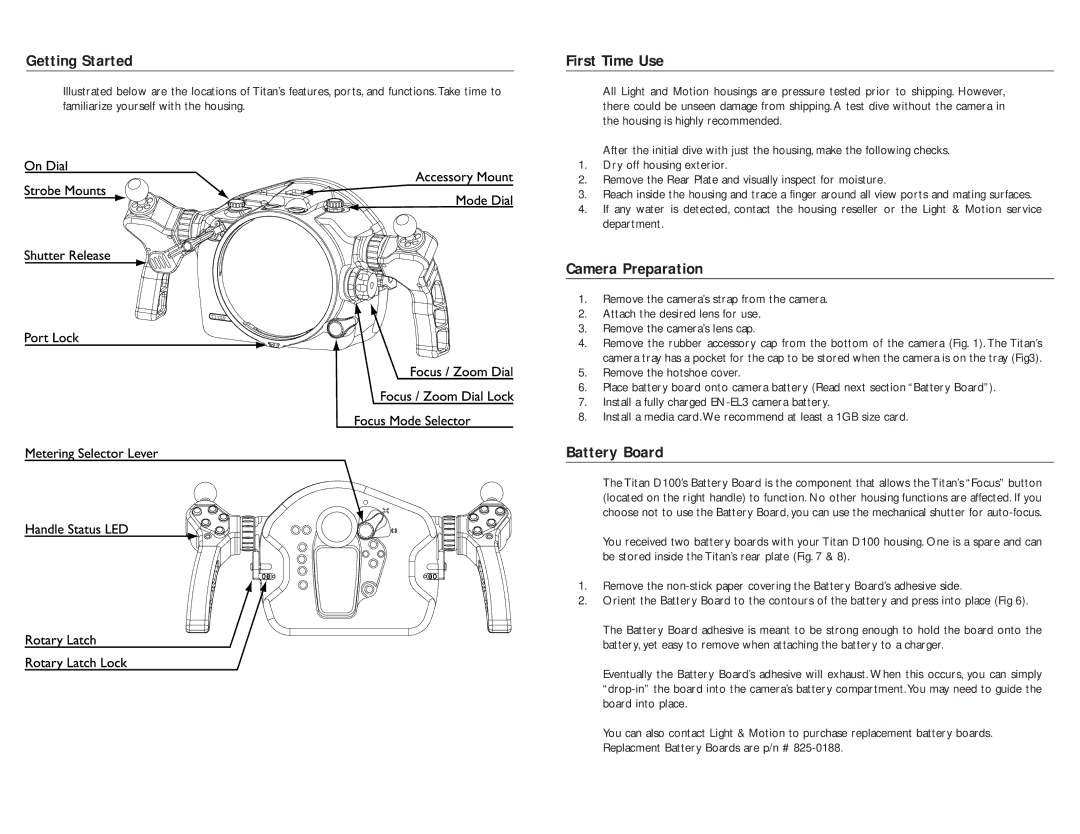D100 specifications
The Light & Motion D100 is an exceptional dive light designed to meet the needs of underwater enthusiasts, offering a blend of durability, performance, and versatility. This powerful dive light is particularly favored by scuba divers, underwater photographers, and videographers who require high-quality illumination in the challenging underwater environment.One of the standout features of the D100 is its impressive output of up to 1000 lumens, providing bright and even light that penetrates the depths of the ocean. The beam angle of 80 degrees ensures that divers can illuminate a wide area, making it ideal for exploring coral reefs or wrecks where peripheral visibility is essential.
The D100 is built with robust construction, featuring an aluminum body that is lightweight yet highly durable. This ensures that the light can withstand the rigors of marine environments, including resistance to corrosion from saltwater. The anodized finish adds an extra layer of protection against scratches and impacts, further enhancing its longevity.
In terms of battery technology, the D100 is equipped with a rechargeable lithium-ion battery that guarantees hours of use on a single charge. The intelligent battery management system allows for real-time tracking of battery life, providing divers with peace of mind by ensuring they have adequate light throughout their dive. The light also features a simple user interface with three brightness levels, enabling divers to easily adjust the output based on their specific needs.
The Light & Motion D100 is also designed to minimize environmental impact. It uses LED technology, which not only extends the life of the light but also consumes less energy compared to traditional lighting solutions. This efficiency translates to fewer battery changes and less waste over time.
Moreover, the D100 is designed for versatility, with a built-in mounting system that allows it to be easily attached to various camera systems and dive gear. This makes it an excellent choice for underwater photographers who require flexible lighting options.
In conclusion, the Light & Motion D100 blends innovative technology with exceptional performance, making it a top choice for divers and underwater photographers alike. With its robust construction, impressive lumen output, and efficient battery system, the D100 delivers reliable illumination for every underwater adventure. Whether you are exploring marine life or capturing stunning underwater images, the D100 stands out as a reliable companion in the depths.

